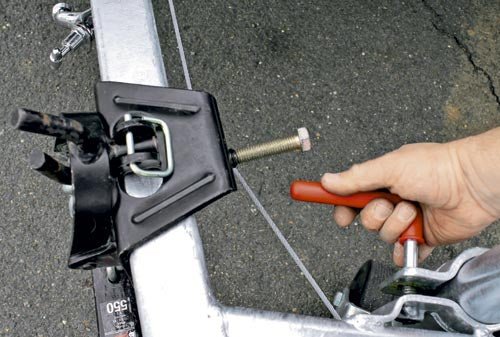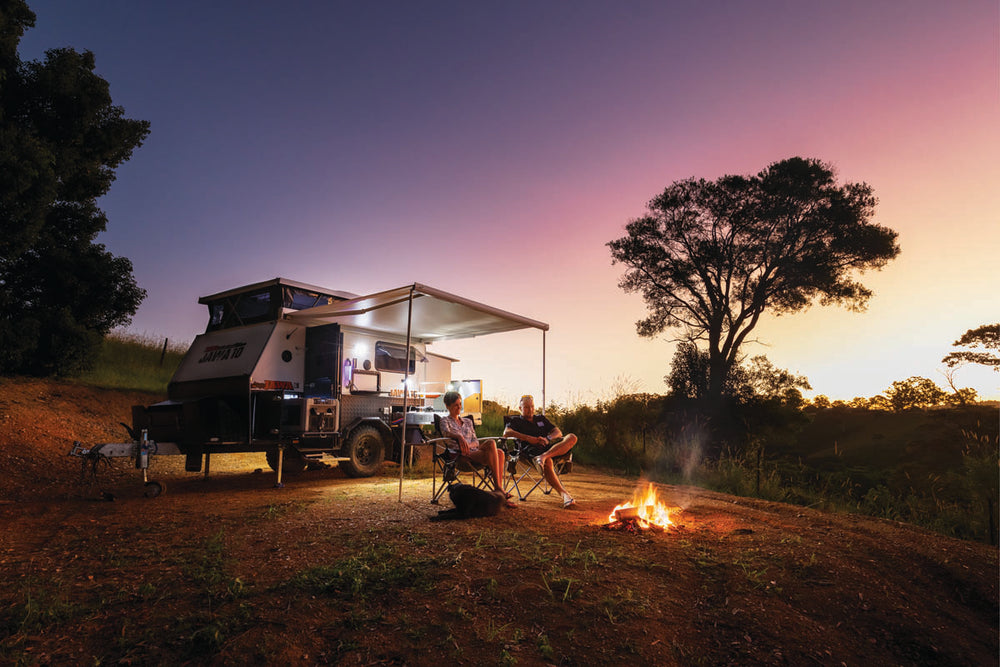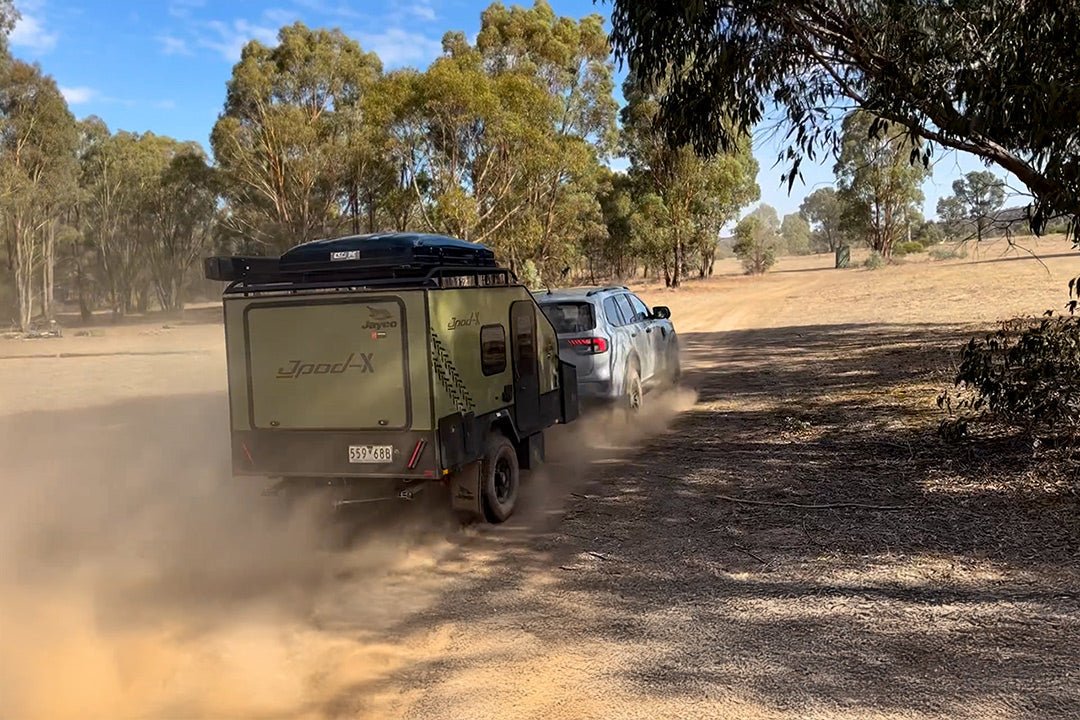TECH & TOWING: HITCHING YOUR CARAVAN

Hitching up a caravan is simple, albeit heavy, work, but once you’ve learnt how to do it, it’s like riding a bike – you’ll never forget it. And just as there is a difference between wobbling along on two wheels and riding smoothly and confidently, there are ways to make hitching up a smooth and relatively easy process.
Even though bolting up a weight distribution hitch (WDH) is simple enough, you need to make sure that what you’re setting up will work. Always start by checking that your WDH is compatible with your vehicle and van. For example, the Eaz-Lift tongue in these photos is not compatible with the Holden towbar due to Holden’s offset locking pin hole. Luckily, we didn’t need to move the van for the purpose of this photo shoot, but I now need to source the correct tongue for the vehicle or see about drilling the tongue to suit.
The aim of a WDH is to transfer weight to stop the back of your vehicle drooping down and the front lifting up, which makes steering unpredictable and the rig generally unstable. The ideal target is a perfectly level vehicle and van, perfectly balanced. It’s worth remembering, though, that this is not always achievable.
TAKING MEASUREMENTS
Before you start, measure the front and rear unladen heights of the vehicle and the (level) front and rear heights of the caravan as this should give you the ideal scenario.
But don’t assume an unladen vehicle is always going to be level. The Holden Caprice pictured here has heavy-duty after-market springs and shocks in place of the standard auto-levelling rear suspensionm, giving it a jacked-up stance at the rear. This is meant to take a load but, as we will soon see, a heavy ball load will need more help than just heavy springs.
We’ve measured the tow tug’s wheel arches from the top centre of the wheel arch to a fixed point on the wheel. It’s best not to measure at the ground because there is a chance that the tyre will bulge under load and introduce errors into your calculations.
Measuring the van is a bit trickier because you’ll need to get the jockey wheel perfectly level. When you measure at the front side and rear side, you should come up with an identical figure (assuming that the side cladding is at a consistent height from the ground).
When hitching up a van, the additional load on the rear of the vehicle should not cause the body to drop more than about 20mm on the suspension, or a corresponding rise at the front wheels.
You should also check that the towball is at the same height as your hitch, with the caravan sitting level. One method to match heights is to rotate the hitch receiver.
Check that the tow hitch is at a legal height from the ground – the centre of the body of the ball coupling should be 350-460mm from ground level when coupled to the caravan.
With the van coupled to the standard hitch, wind down the jockey wheel. This is where many people hit their first snag – the jockey wheel has bottomed out and the van is not fully supported by the hitch. In this case, you need to support the A-frame so you can detach the jockey wheel and re-fit it in the position where it can be released as the vehicle suspension compresses to take the weight.
If the jockey wheel retracts, note where on its shank it is clamped to the A-frame. There should be a ridge on the jockey wheel, and this is intended to positively locate the shank in the clamp, to reduce the risk of the jockey wheel slipping.
LOAD DISTRIBUTION
With the van hitched up you can now re-do your wheel-arch measurements to see if the difference is more than 20mm. If it is, you’ll need to consider either load levelling or load redistribution.
Even though the Caprice’s rear is unusually high, it dropped 30mm while the front raised 10mm.
If your van is light, well-balanced, and has a light ball load, you probably don’t need a WDH. If you have an AL-KO friction-type coupling, you can’t use a WDH anyway, as there is nowhere to place the torsion bar brackets. This type of van typically has a light ball load and the friction coupling is designed to reduce sway – something that it can’t do if you could fit a WDH. Even though the friction coupling is a set-and-forget design, don’t forget to fit the correct type of towball for a friction coupling and not to lubricate it – otherwise the friction that helps reduce sway won’t work.
Before you invest in a WDH, make sure your caravan and vehicle load is properly distributed. You should try to load the heaviest items over the axle of the caravan and ahead of the rear axle in the vehicle, if possible.
In the heavy-duty WDH set-up most people use, you usually get a specific towball tongue, two torsion bars, retaining pins, two A-frame clamps and a levering tool.
The angle of the hitch and the number of chain links used are crucial and the way you tell if you’ve been successful is by whether or not the vehicle is level. It’s unlikely you’ll replicate your pre-hitching wheel arch measurements but if they’ve dropped by roughly an equal amount, and the van is level, then the WDH is doing its job.
Always keep your feet well clear of torsion bars when either securing them or releasing them, because if they are under a lot of tension you could end up with foot injuries. To reduce the chances of this happening, wind up the jockey wheel so that the vehicle is actually slightly raised from a level position and there is minimal tension on the bars.
Thanks to Jayco Sydney, 63-67 Glossop Street, St Mary’s, NSW, (02) 9623 1971, for providing assistance with this article.
Originally published in Caravan World #506, September 2012.







